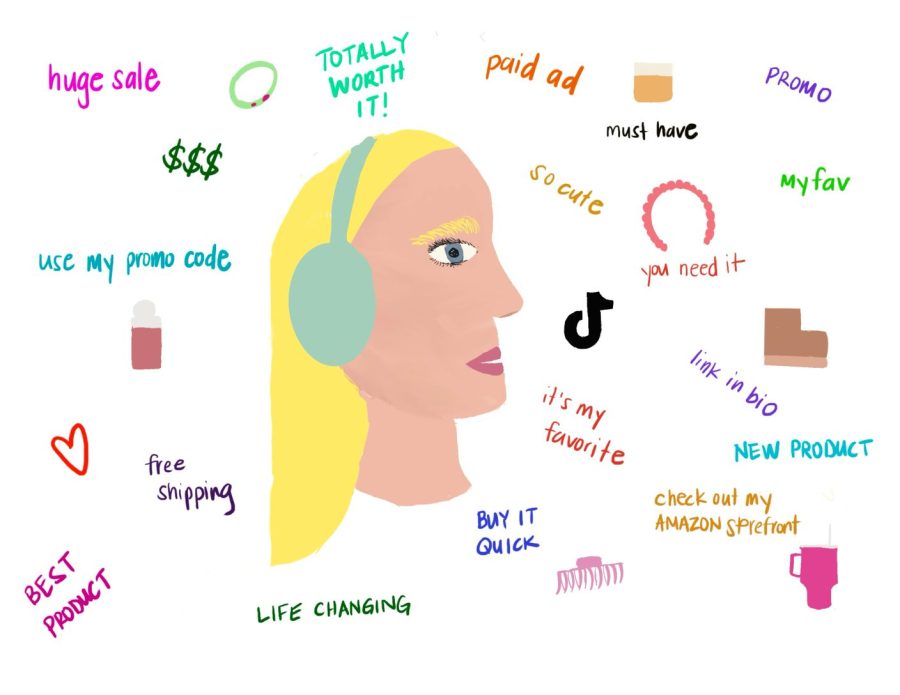Waving Buy Buy to Microtrends
March 17, 2023
The next big thing is out there, waiting to be discovered. Microtrends are small-scale fads, contributing to a toxic culture of consumerism and materialism.
On social media platforms like TikTok, Instagram, and Twitter microtrends flourish. Fashion styles like the “VSCO” look, or the “sustainable” product hauls with Hydro Flasks and Stanley cups, are nothing more than momentary obsessions. Online influencers fuel this, by creating and popularizing microtrends, pressuring their followers to buy the next big thing that they may not necessarily want or need.
Recently, Tik Tok creator Alix Earle crafted a lifestyle-based platform on social media. Her “vlog” style videos, focusing on makeup, clothing, and life updates, have made her increasingly popular with adolescent girls.
“I watch Alix Earle on Tiktok. She has a lot of influence on many teenage girls which may affect the way they dress, the makeup they wear, the brands they buy from,” said sophomore Lily Carey. “I think when people- especially girls- see a trend online, it might change the way they perceive themselves. It might be degrading since they want to change to look like other people.”
Because microtrends have a short lifespan, they quickly become outdated and are then replaced by the next trend. This constant cycle of consumption and disposal can lead to excess waste.
“I’ve seen so many people buy an entire new closet for a trend, and then get rid of it like two months later. Consumerism is super important to the American culture, and microtrends online are just helping feed that consumerism,” says senior Jadyn Babb.
Microtrends are often associated with a disposable mindset, where people are encouraged to consume quickly and dispose of items just as quickly- instead of repairing or repurposing.
For example, fast fashion brands like Shein or Fashion Nova often create trendy but cheap, low-quality clothing items that are produced quickly and inexpensively to meet consumer demand. In a study done by the United States Environmental Protection Agency, around 85% of all textiles are either dumped into a landfill or burned.
“We are just adding to the landfills, so I get all my clothes from thrift stores. It’s the best option for me,” says Babb.
It is important to be aware of the negative consequences of microtrends, to adopt better consumption habits, and promote a healthier, more sustainable future. When you shop for new items, be mindful of the impact of your purchases. Consider investing in high-quality pieces that will last longer, and can be worn in versatile ways. Consider shopping second-handed. Consider how consumerism might just consume you.


